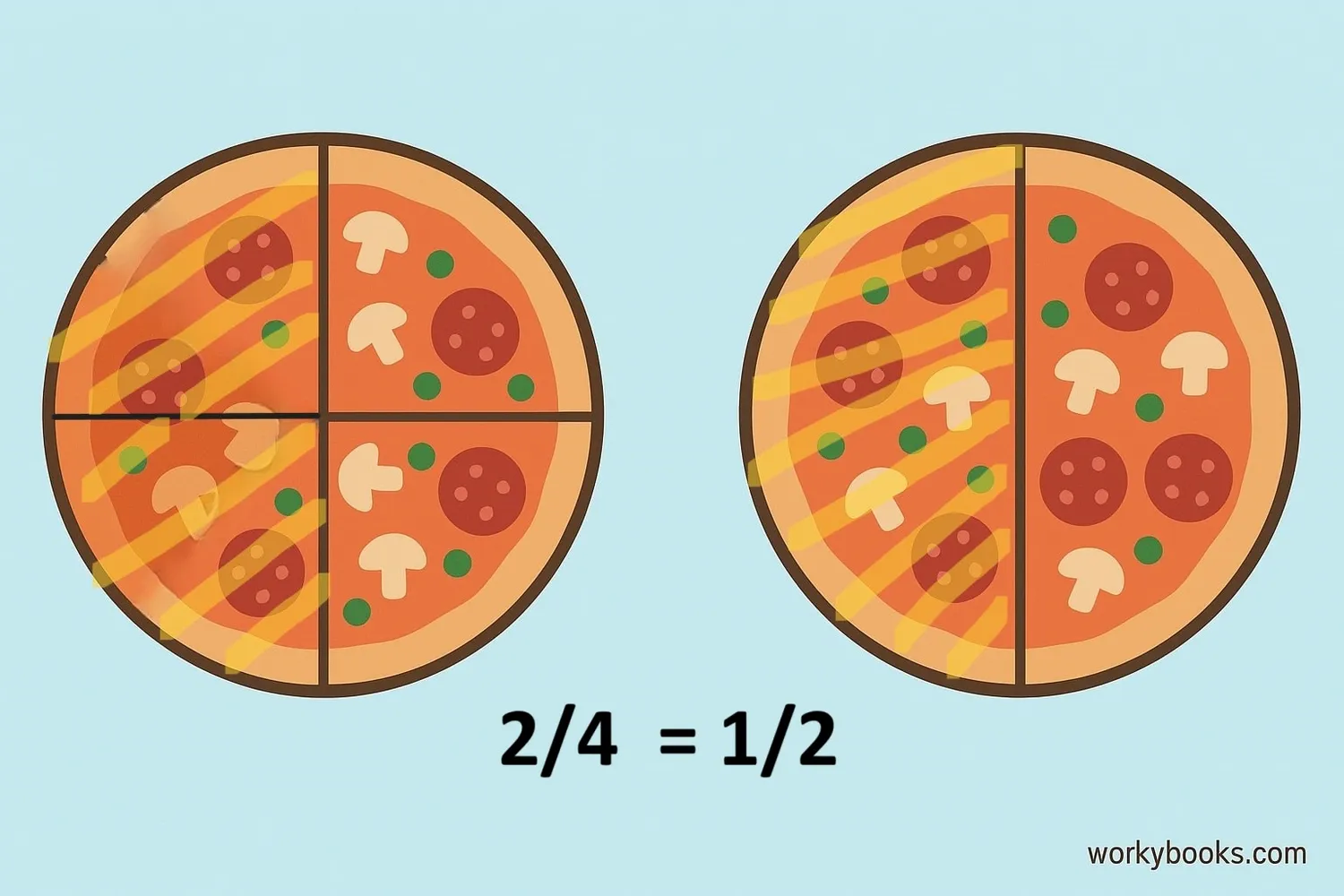Simplify - Definition, Examples, Quiz, FAQ, Trivia
Learn to reduce fractions to their simplest form with easy explanations and practice activities
What is Simplifying Fractions?

Simplifying fractions means making a fraction as simple as possible. We do this by finding an equivalent fraction with the smallest possible numerator and denominator. This is also called reducing fractions to their lowest terms.
Why do we simplify fractions? Simplified fractions are:
- Easier to understand and work with
- Simpler to compare with other fractions
- The standard way to present fraction answers
A fraction is in its simplest form when the numerator and denominator have no common factors other than 1. This means you can't divide both numbers evenly by any number except 1.
Key Concept
Simplifying fractions doesn't change their value - it just makes them easier to work with!
How to Simplify Fractions
There are two main methods to simplify fractions. Let's learn both:
Method 1: Divide by Greatest Common Factor (GCF)
Method 2: Divide by Common Factors Repeatedly
Remember
Always check if your fraction can be simplified further. If the numerator and denominator have any common factors (other than 1), you can still simplify!
Simplification Examples
Let's look at some examples of simplifying different types of fractions:
Example 1: Simplifying Proper Fractions
Simplify 9/12
Step 1: Find factors of 9 (1, 3, 9) and 12 (1, 2, 3, 4, 6, 12)
Step 2: Greatest Common Factor is 3
Step 3: Divide both by 3: 9 ÷ 3 = 3, 12 ÷ 3 = 4
Answer: 3/4
Example 2: Simplifying Improper Fractions
Simplify 18/4
Step 1: Find factors of 18 (1, 2, 3, 6, 9, 18) and 4 (1, 2, 4)
Step 2: Greatest Common Factor is 2
Step 3: Divide both by 2: 18 ÷ 2 = 9, 4 ÷ 2 = 2
Answer: 9/2 (which can be written as 4½ as a mixed number)
Example 3: Fractions That Are Already Simplified
Is 7/9 simplified?
Step 1: Find factors of 7 (1, 7) and 9 (1, 3, 9)
Step 2: The only common factor is 1
Answer: Yes! 7/9 is already in simplest form
Practice Tip
Try simplifying fractions in your daily life - when sharing food, dividing toys, or measuring ingredients!
Fraction Simplification Quiz
Test your simplification skills with this 5-question quiz. Choose the correct answer for each question.
Frequently Asked Questions
Here are answers to common questions about simplifying fractions:
Fraction Trivia
Discover interesting facts about fractions:
Ancient Fractions
The ancient Egyptians used fractions as early as 1800 BC, but they only used unit fractions (fractions with numerator 1) like 1/2, 1/3, 1/4. They represented other fractions as sums of unit fractions.
Fractions in Nature
Fractions appear everywhere in nature! Flower petals often follow fractions in the Fibonacci sequence (1/2, 2/3, 3/5, 5/8). Pineapples, pinecones, and sunflowers all show fractional patterns.
Fractions in Music
Musical rhythms are based on fractions! A whole note gets 4 beats, a half note gets 2 beats, a quarter note gets 1 beat, and an eighth note gets 1/2 beat. Time signatures like 3/4 and 4/4 are fractions too!
The Largest Fraction
There is no largest fraction! Fractions can keep getting bigger by increasing the numerator or decreasing the denominator. But the fraction with the smallest value is the one with the largest denominator when numerator is 1.


